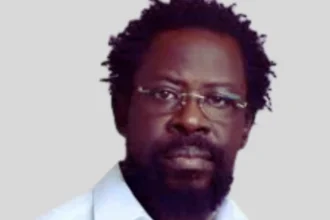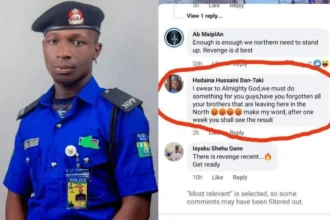The Nigerian Civil War (1967–1970), also known as the Biafran War, was one of the most tragic and defining events in modern African history. The war stemmed from deep-seated ethnic, political, and economic tensions in Nigeria, culminating in the secession of the southeastern region to form the Republic of Biafra. The war was marked by widespread atrocities, famine, and immense suffering, leaving scars that persist to this day.
One of the war’s darkest moments occurred in Asaba, a town in the Midwest region of Nigeria. On October 7, 1967, federal troops committed a mass killing that came to be known as the Asaba Massacre. This atrocity claimed hundreds of lives, left survivors traumatized, and exposed the brutal realities of a conflict fueled by mistrust and vengeance. This article delves into the causes, events, and aftermath of the massacre, shedding light on a tragedy that demands remembrance.
1. Timeline: When It Happened
The massacre took place during the early stages of the Nigerian Civil War, specifically on October 7, 1967.
The war began on July 6, 1967, after the southeastern region declared itself the independent Republic of Biafra. In August of that year, Biafran forces advanced westward into the Midwest region (now divided into Edo and Delta states), capturing key towns, including Asaba. This bold move was an attempt to pressure the federal government and potentially gain support from other parts of the country.
By early October, federal troops launched a counteroffensive to reclaim the Midwest. As Biafran forces retreated eastward, Asaba became a strategic location and the site of significant violence.
2. Causes: What Led to the Massacre
Several factors contributed to the massacre which include
- Ethnic Tensions:
Nigeria’s political landscape was deeply divided along ethnic lines. The federal troops, predominantly from northern Nigeria, harbored resentment toward the Igbo ethnic group, which dominated the southeastern region and was seen as the driving force behind Biafra’s secession. - Military Retaliation:
The capture of the Midwest region by Biafran forces angered federal troops, who viewed the region’s inhabitants, including those in Asaba, as collaborators or sympathizers of the Biafran cause. - Revenge for Federal Losses:
Federal troops suffered significant losses during the initial Biafran advance. This created a climate of vengeance when they regained control of areas like Asaba. - Misinformation and Paranoia:
Federal troops were reportedly told that Asaba was a hub of Biafran support. This perception, whether accurate or not, fueled their violent actions against civilians.
3. Events of the Massacre: What Happened
When federal troops entered Asaba in early October, the town was already reeling from the retreat of Biafran forces. What followed was a horrific sequence of events:
- Looting and Destruction:
Soldiers began by looting homes and businesses, destroying property, and arresting civilians indiscriminately. - Rape and Assault:
Women and girls were subjected to sexual violence, while men were targeted for arrest or execution. - Call for a Celebration:
On October 7, the soldiers invited residents to gather at the town square, claiming it was a celebration to mark their “liberation” from Biafran occupation. Trusting the soldiers, many residents dressed in their finest white attire, a traditional symbol of peace. - Mass Execution:
At the gathering, soldiers separated men and boys from women and girls. Without warning, they opened fire on the unarmed crowd, killing hundreds. Bodies were dumped into mass graves, often by the survivors themselves.
The massacre devastated the community, leaving few families untouched by the loss.
4. Casualties: How Many Were Killed
The exact number of victims remains a matter of debate due to the lack of official records. Estimates range from 700 to 1,000 deaths, with some survivors suggesting the toll could be higher.
What is clear is that the victims were overwhelmingly male and included boys as young as 12 years old. Many families lost multiple members, leaving entire households wiped out or broken. The psychological toll on survivors was immense, as they were forced to bury their loved ones under duress and carry the trauma for generations.
5. Perpetrators: Who Did the Killing
The massacre was carried out by federal troops loyal to the Nigerian government, under the command of senior officers involved in the Midwest campaign.
While the soldiers justified their actions by accusing the people of Asaba of being Biafran sympathizers, the victims were primarily non-combatants. The killings were indiscriminate, targeting unarmed civilians rather than Biafran fighters. To date, there has been no accountability for those responsible.
6. Aftermath: What Happened Next
- Immediate Aftermath:
Survivors buried the dead in hurriedly dug mass graves. Asaba was left in ruins, with many buildings destroyed and families torn apart. - Silence and Denial:
For decades, the Nigerian government avoided acknowledging the massacre. The lack of official recognition or justice added to the survivors’ pain. - Long-Term Trauma:
The massacre left deep scars on the Asaba community. Survivors and descendants carried the trauma, with some choosing to suppress the memories to cope with the loss. - Reconciliation Efforts:
In recent years, grassroots efforts and advocacy have aimed to preserve the memory of the massacre. A memorial cenotaph was erected in Asaba in 2017 to honor the victims, providing a place for reflection and healing. - Academic and Global Recognition:
Scholars like S. Elizabeth Bird and Fraser Ottanelli have documented the massacre, bringing international attention to the atrocity. Their work has highlighted the importance of remembrance and the ongoing struggle for justice.
The Asaba Massacre stands as a grim reminder of the human cost of war. It underscores the dangers of ethnic hatred, misinformation, and unchecked violence. For Nigeria, the massacre is not just a tragedy of the past but a lesson for the future: the need for justice, reconciliation, and the preservation of historical memory.
As the world remembers the victims of Asaba, it is crucial to ensure that such atrocities are never repeated. By acknowledging and learning from history, societies can build a foundation for lasting peace and unity.
Sources and Further Reading
- The Asaba Massacre: Trauma, Memory, and the Nigerian Civil War by S. Elizabeth Bird and Fraser Ottanelli.
- Oral histories and survivor accounts.
- Historical records and reports on the Nigerian Civil War.

















